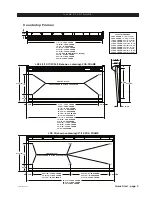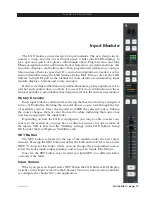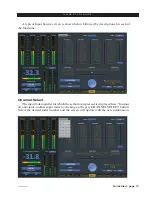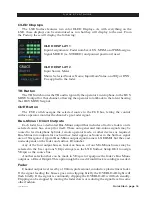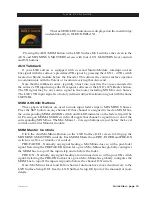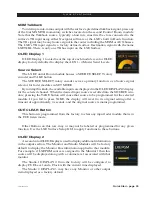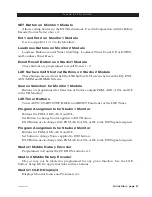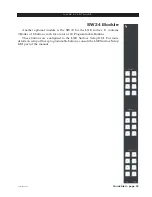
Quick Start - page 16
LXE / Feb 2018
Q U I C K S T A R T G U I D E
OLED Displays
The LXE Surface features two color OLED Displays. As with everything on the
LXE, these displays can be customized as to what they will display to the user. From
the Factory these will display the following:
OLED DISPLAY 1
Input Assignments: Fader number, AUX, MXM, and PGM assigns,
Signal MODE (i.e. STEREO) and panned position if used.
OLED DISPLAY 2
Input Source Meter
Shows Selected Source Name, Input Gain Value, and EQ or DYN,
Cue applied to the fader.
TB Button
The TB Switch routes the TB audio, typically the operator’s microphone, to the BUS
MINUS output for that channel, allowing the operator to talkback to the talent hearing
that BUS MINUS signal.
CUE Button
The CUE switch assigns the selected source to the CUE bus, letting the control
surface operator monitor the channel’s pre-fader signal.
Bus-Minus / Direct Outputs
Each fader has a dedicated Bus-Minus output that includes all active faders on its
selected source bus, except for itself. These auto generated mix-minus signals may be
routed to feed telephone hybrids, remote operator feeds, or other devices as required.
Bus-Minus mix outputs for each surface fader appear as Sources in the Surface signal
area of Navigator. A typical Bus-Minus output signal name is LXEBM01 but the exact
name depends on the fader and surface ID number.
Any of the four output busses, four Aux busses, or four Mix Minus busses may be
selected in the User options VDip settings (see the LXE Surface Setup GUI to assign
VDips) as the source bus.
Another selection that can be made in VDip is to repurpose the fader’s Bus Minus
output as a Direct Output. This option might be used if multitrack recording is needed.
Fader
Channel output level is set by a 100mm, professional, conductive plastic linear fader.
If the signal feeding the busses goes into clipping briefly the OVERLOAD light will
flash briefly. If the signal is continually clipping the OVERLOAD will flash steadily.
Clipping can be stopped by moving the fader down, or reducing the signal level in some
other fashion.


